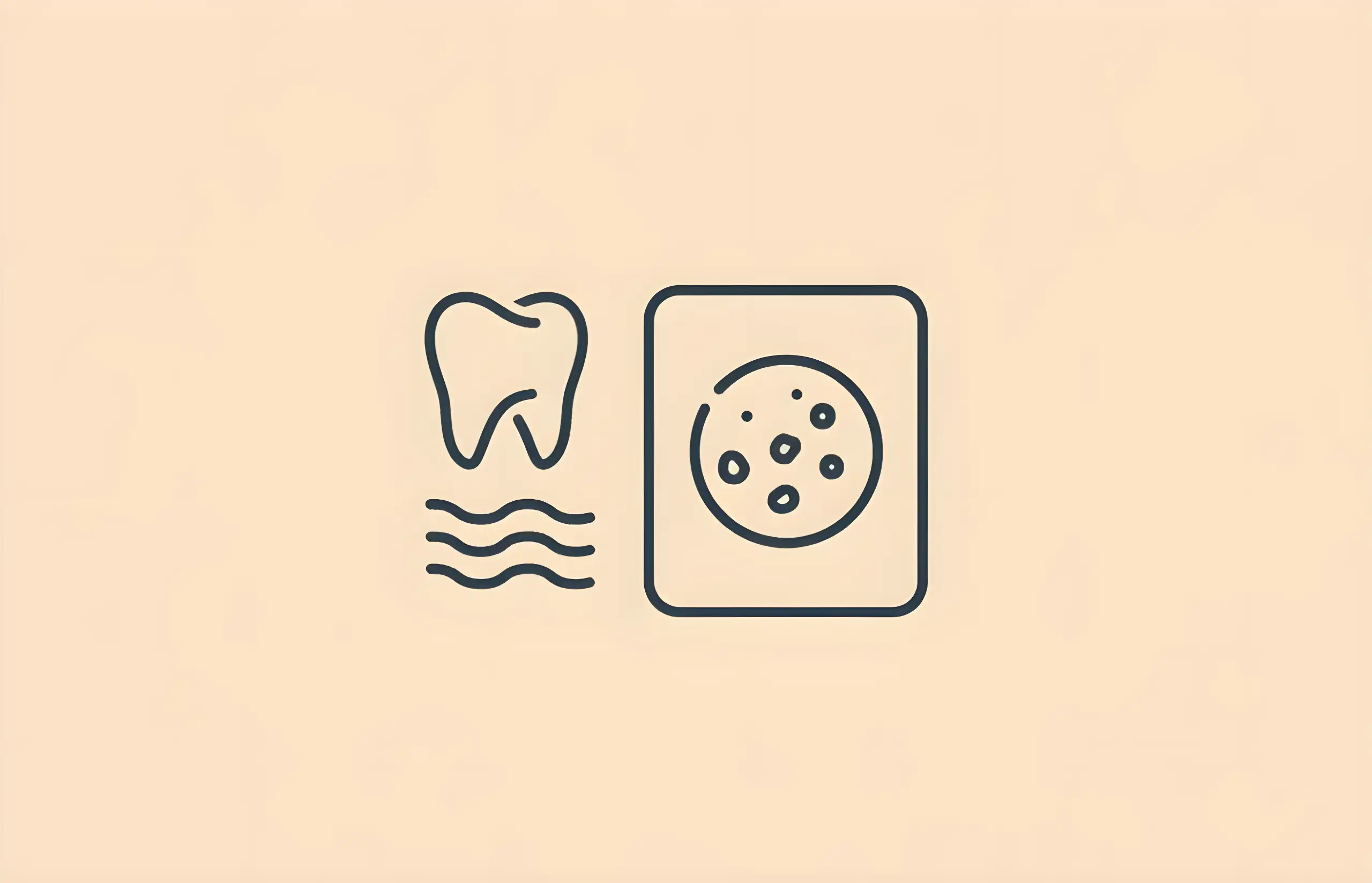What Are Flexible or Chrome Dentures?
Flexible dentures represent a modern solution to tooth replacement that has gained significant popularity in the UK due to their comfort and aesthetic advantages. However, there's often confusion about terminology—"flexible dentures" and "chrome dentures" actually refer to two different types of partial dentures with distinct materials and properties.
Understanding the Material Difference
Flexible dentures are made from thermoplastic nylon-based materials such as polyamide resin. These materials were first introduced in the 1950s and are produced through condensation reactions between a diamine and a dibasic acid. The resulting material is lightweight, fracture-resistant, and naturally flexible, eliminating the need for visible metal clasps.
Chrome dentures (also called cobalt-chromium or Co-Cr dentures) feature a rigid metal framework made from a cobalt-chromium alloy. This framework typically contains 35-65% cobalt combined with chromium, creating a sturdy prosthetic structure that supports artificial teeth. The metal framework provides exceptional strength while remaining biocompatible with oral tissues.
The original article conflates these two distinct types, so it's important to understand that when dentists discuss "flexible partial dentures," they're typically referring to the nylon-based thermoplastic variety, not the metal-framework chrome dentures.
Why Cobalt-Chromium Alloy?
For chrome dentures specifically, the cobalt-chromium alloy has been chosen for several compelling reasons supported by scientific research. A systematic review analyzing 21 studies found that cobalt-chromium alloys demonstrate good biocompatibility, ranking as "Ti > Cr/Co > Ni" in safety (meaning titanium is superior, but cobalt-chromium significantly outperforms nickel-based alternatives).
The alloy's key advantages include:
Biocompatibility: Research indicates that Co-Cr "could rarely cause sensitization, irritation, and allergic reactions except for patients being allergic to Co or Cr." One study of 66 patients found zero allergic reactions over 1-5 years of wear.
Structural strength: The metal framework maintains dimensional stability and provides robust support for artificial teeth without the bulk required by acrylic alternatives.
Durability: Cobalt-chromium frameworks resist fracture and deformation under normal masticatory forces.
Minimal tissue reaction: When properly fabricated, the metal framework sits against oral tissues without causing inflammation or discomfort in the vast majority of patients.
However, it's important to note that in 2020, the EU classified metallic cobalt as a CMR Category 1B substance (carcinogenic 1B, mutagenic 2, reproductive toxicant 1B), limiting its use to 0.1% concentration in final products. This regulatory change impacts dental alloys containing 35-65% cobalt, though clinical evidence of harm from dental prostheses remains minimal.
How Much Do Flexible Partial Dentures Cost in the UK?
Understanding the cost structure for flexible partial dentures requires examining multiple factors that influence the final price. Unlike dental implants, which can cost thousands of pounds per tooth, flexible dentures offer a more economical solution for replacing multiple missing teeth.
Price Range and Factors
Typical costs for flexible partial dentures in the UK: £600 to £1,500
This wide range reflects several key variables:
Number of teeth: Replacing 5 teeth costs significantly less than replacing 10. Each additional tooth increases both material and laboratory fabrication costs.
Material selection:
- Nylon-based thermoplastic flexible dentures (Valplast, Duraflex, etc.)
- Cobalt-chromium alloy framework dentures
- Semi-flexible hybrid materials
Thermoplastic flexible dentures typically cost more than traditional acrylic dentures (which might range £300-£800) but less than high-end cobalt-chromium frameworks.
Brand differences: Premium brands like Valplast command higher prices than generic thermoplastic alternatives, though clinical performance varies. Research on material properties shows different brands exhibit different water sorption rates, flexural strength, and color stability—factors that may justify price differences.
Geographic location: London and Southeast England practices generally charge 20-40% more than practices in Northern England, Scotland, or Wales.
Practice overhead: Private dental practices in affluent areas or those offering premium services typically charge toward the upper end of the range.
Cost Breakdown by Service
The total cost encompasses several distinct services:
Initial consultation: £50-£100
- Oral examination
- Treatment planning
- Discussion of material options
Impressions and measurements: £100-£200
- Precise dental impressions
- Bite registration
- Shade and tooth selection
Laboratory fabrication: £300-£900
- Professional dental laboratory fees
- Material costs
- Custom fabrication
Fitting sessions (1-3 visits): £150-£300
- Initial insertion and adjustment
- Bite refinement
- Patient education on care and maintenance
Price Per Arch
Many UK dental practices quote prices per arch (upper or lower jaw):
- Starting price: £400-£600 per arch
- Premium options: £800-£1,200 per arch
Patients requiring both upper and lower flexible partial dentures should expect costs at the higher end of the spectrum, potentially reaching £2,000-£3,000 for comprehensive treatment.
Cost Comparison to Alternatives
Understanding flexible dentures' value proposition requires comparison to alternatives:
| Treatment Option | Approximate Cost (UK) | Lifespan |
|---|---|---|
| Acrylic partial dentures | £300-£800 | 5-7 years |
| Flexible partial dentures | £600-£1,500 | 5-10 years |
| Cobalt-chromium dentures | £800-£2,000 | 10-15 years |
| Dental implants (per tooth) | £2,000-£3,000 | 20+ years |
| Dental bridge (3-unit) | £1,500-£3,000 | 10-15 years |
Research demonstrates that while flexible dentures cost more initially than acrylic alternatives, the superior patient satisfaction may justify the investment. A study found that 100% of participants preferred flexible dentures over conventional acrylic alternatives after extended use.
Does the NHS Make Flexible Dentures Easy to Access?
The NHS dental service operates on a banded charging system that covers many dental treatments, but flexible dentures present a complex situation regarding coverage and accessibility.
Standard NHS Position
As a general rule, the NHS does not routinely provide flexible dentures. Standard NHS denture treatment falls under Band 3 (currently £282.80 as of 2024) and typically covers conventional acrylic dentures. These acrylic prostheses meet the clinical need for tooth replacement and are therefore the default NHS option.
Exceptional Circumstances for NHS Coverage
The NHS may provide flexible dentures in specific clinical situations where conventional acrylic dentures are contraindicated:
Medical allergies: Patients with documented PMMA (polymethyl methacrylate) allergy cannot tolerate standard acrylic dentures. Clinical evidence supports flexible dentures as "suitable in cases of allergy to PMMA," making this a legitimate medical justification for NHS provision.
Severe gag reflex: Some patients experience intractable gagging with bulky acrylic denture bases. The reduced palatal coverage possible with flexible materials may resolve this issue.
Restricted mouth opening: Patients with temporomandibular joint disorders, trismus, or anatomical limitations may struggle with rigid denture insertion. Flexible materials accommodate restricted oral access.
Severe undercuts: Anatomical ridge configurations with extreme undercuts may prevent conventional denture placement but allow flexible denture insertion due to material flexibility.
The Approval Process
To obtain NHS-funded flexible dentures:
- Discuss with your NHS dentist before proceeding with any treatment
- Document medical necessity with clear clinical justification
- Obtain prior approval from NHS England if required by your local area
- Understand that approval is not guaranteed and depends on individual clinical circumstances
Geographic Variation
NHS policies regarding exceptional treatments vary by Integrated Care Board (ICB) area in England. Scotland, Wales, and Northern Ireland have separate health services with different policies. Some areas may be more accommodating than others regarding flexible denture provision.
Private vs NHS: Cost Reality
NHS Band 3 dentures: £282.80 (conventional acrylic) Private flexible dentures: £600-£1,500
The price difference is substantial. Patients who value the comfort and aesthetic advantages of flexible dentures but don't qualify for NHS exceptional provision must pay privately. Research suggests this investment delivers meaningful benefits—oral health-related quality of life scores (OHIP-14) improved from 12.4±9.8 to 3.8±5.6 (p<0.001) with flexible dentures, compared to 4.8±5.3 with acrylic dentures.
What Flexible Dentures Can Do for You
The clinical benefits of flexible partial dentures extend beyond simple tooth replacement, offering advantages that research has quantified through rigorous patient outcome studies.
Superior Comfort and Quality of Life
A comparative study using the OHIP-14 (Oral Health Impact Profile) assessment found remarkable improvements in oral health-related quality of life with flexible dentures:
- Baseline OHIP score: 12.4±9.8
- After acrylic dentures: 4.8±5.3 (p=0.001)
- After flexible dentures: 3.8±5.6 (p<0.001)
The lower score indicates better quality of life, with flexible dentures achieving statistically superior outcomes.
Dramatic Reduction in Mucosal Irritation
One of the most significant advantages documented in research involves soft tissue comfort. A clinical study found:
- Traditional acrylic dentures: 14 patients experienced severe mucosal irritation (grades 3-4)
- Flexible dentures: Nearly zero cases of severe irritation
- Statistical significance: P < 0.001
This represents a clinically meaningful improvement in day-to-day comfort, particularly important for elderly patients with sensitive oral tissues.
Patient Preference: A Clear Winner
The most compelling evidence for flexible dentures comes from direct patient feedback. Research found that 100% of 18 study participants preferred flexible dentures over conventional acrylic alternatives after extended use periods.
A systematic review analyzing 35 studies found overall satisfaction rates with removable partial dentures ranging from 50% to 81%, with flexible and thermoplastic resin dentures consistently demonstrating superior satisfaction compared to metal or acrylic alternatives, particularly regarding aesthetics and comfort.
Specific Functional Improvements
Speech and pronunciation: After acrylic denture use, 11 patients (36.6%) reported trouble pronouncing words. Flexible dentures reduced speech impediments due to thinner, less bulky design.
Eating comfort: While 9 patients (30.0%) found eating uncomfortable with both denture types, flexible dentures caused fewer meal interruptions—only 4 patients (13.3%) experienced this issue compared to higher rates with acrylic.
Halitosis reduction: Traditional dentures showed 11 patients with high-grade bad breath symptoms; flexible versions reduced this to 2 cases (11%), representing statistically significant improvement.
Fracture resistance: "There was no fracture observed in new flexible dentures" during an 18-month clinical observation period, contrasting sharply with frequent breakage complaints from acrylic denture users.
Ideal Candidates for Flexible Dentures
Research identifies specific patient populations who benefit most:
Senior citizens with sensitive tissues: Age-related mucosal thinning makes traditional denture wear uncomfortable. Flexible materials distribute forces more evenly and reduce pressure points.
Patients with metal allergies: Those who cannot tolerate cobalt-chromium or other metal frameworks find flexible nylon-based materials hypoallergenic and well-tolerated.
Aesthetic-conscious individuals: The elimination of visible metal clasps represents a major cosmetic advantage. Flexible dentures use gingiva-colored retention elements that blend invisibly with natural tissues.
Patients with anatomical challenges: Severe undercuts, knife-edge ridges, or irregular anatomy that complicates conventional denture fabrication may be successfully managed with flexible materials that adapt to difficult contours.
Why Not Just Use Dental Bridges or Implants?
The article correctly identifies clinical situations where dental bridges and dental implants may not be optimal solutions for tooth replacement.
Limitations of Dental Bridges
Dental bridges require sound abutment teeth at both ends of the edentulous span. Several factors limit their applicability:
Insufficient or weakened anchor teeth: Bridges depend on strong neighboring teeth for support. Patients with compromised teeth, extensive decay, or periodontal disease may lack adequate abutments.
Extensive tooth loss: Replacing 5-10 missing teeth would require multiple bridges, necessitating preparation (grinding down) of numerous healthy teeth—a destructive approach that most dentists avoid when possible.
Cost multiplication: At £1,500-£3,000 per 3-unit bridge, replacing multiple teeth becomes prohibitively expensive compared to a single removable partial denture serving the same function.
Limitations of Dental Implants
While dental implants offer superior longevity and function, several factors restrict their use for extensive tooth replacement:
Financial barriers: At £2,000-£3,000 per implant, replacing 5-10 teeth costs £10,000-£30,000—far exceeding most patients' budgets. A flexible partial denture at £600-£1,500 provides functional tooth replacement at a fraction of the cost.
Anatomical contraindications: The article correctly notes that jawbone deterioration accompanies tooth loss. Bone resorption, loss of width and height, and decreased density all compromise implant success. While bone grafting can address deficiency, this adds significant cost, time, and surgical complexity.
Surgical limitations: Placing 5-10 implants requires extensive surgical intervention. For elderly patients or those with medical comorbidities (uncontrolled diabetes, bisphosphonate use, immunosuppression, bleeding disorders), multiple implant surgeries may present unacceptable risks.
Treatment duration: Implant treatment spans 6-18 months from initial surgery to final restoration. Flexible dentures can be fabricated and delivered within 2-4 weeks, providing immediate functional and aesthetic restoration.
Medical contraindications: Patients taking anticoagulants, undergoing radiation therapy, or with severe systemic diseases may be poor implant candidates but excellent candidates for removable prostheses.
The Removable Denture Advantage
Flexible partial dentures offer several advantages over fixed prostheses:
- Non-invasive: No tooth preparation, no surgery, no healing period
- Reversible: Can be removed for cleaning and maintenance
- Repairable: Can be adjusted as oral conditions change
- Economical: Fraction of the cost of implants or multiple bridges
- Immediate: Fast fabrication and delivery
- Low risk: Suitable for medically compromised patients
Material Properties: What the Research Shows
Understanding the clinical performance of flexible dentures requires examining their material characteristics as documented in scientific literature.
Water Sorption and Dimensional Stability
ISO 20795-1 standards specify maximum values of less than 32 g/mm³ for water sorption and less than 1.6 g/mm³ for solubility. Research found that most flexible denture materials remained within acceptable sorption limits, though Valplast failed solubility requirements in testing.
Water absorption affects dimensional stability and can lead to:
- Color changes over time
- Altered fit requiring adjustments
- Potential for bacterial colonization
Mechanical Properties Comparison
| Property | Flexible Dentures | Acrylic Dentures |
|---|---|---|
| Flexural strength | Controversial (brand-dependent) | Consistently higher |
| Impact strength | Higher than CAD/CAM resins | Moderate |
| Surface hardness | Lower (66.0±2.78 VHN) | Higher (82.5±3.779 VHN) |
| Retention | Inferior | Superior |
| Fracture resistance | No fractures in 18 months | Frequent breakage reported |
Color Stability Challenges
Research indicates that polyamide materials demonstrate inferior color retention compared to acrylic alternatives. Studies found that flexible dentures "deteriorated slightly more than the acrylic denture base" when exposed to cleaning agents.
Factors affecting color stability:
- Exposure to staining beverages (coffee, tea, red wine)
- Cleaning agent selection
- Duration of use
- Smoking habits
Clinical Implications of Material Properties
Advantages validated by research:
- High dimensional stability
- No porosity
- Excellent wear characteristics
- Light weight
- Heat resistant
- Ductile nature
Limitations documented in studies:
- Easily scratched surfaces
- Rapid color deterioration
- Greater polymerization shrinkage than PMMA
- Difficult repairs and relining
- Artificial tooth debonding (22% at 10-11 months)
Long-Term Performance and Maintenance
Understanding the realistic lifespan and maintenance requirements of flexible dentures helps patients make informed decisions.
Expected Lifespan
Flexible dentures: 5-10 years with proper care Acrylic dentures: 5-7 years Cobalt-chromium dentures: 10-15 years
The 18-month clinical observation period in research showed no fractures in flexible dentures, suggesting good durability under normal use. However, longer-term studies are needed to fully assess longevity compared to conventional alternatives.
Maintenance Requirements
Daily cleaning: Flexible dentures require specialized cleaning approaches. Research on cleaning protocols found:
- Brushing with toothpaste alone: Inadequate (biofilm not completely eradicated)
- Effervescent tablets plus brushing: Effective
- Ultrasonic vibration with cationic detergent: Most effective (statistically superior, p<0.05)
- Chlorhexidine mouthwash: Inferior results with staining risk
Avoid hot water: Never clean flexible dentures with hot water, as thermoplastic materials can warp at elevated temperatures.
Professional maintenance: Annual dental examinations to assess fit, occlusion, and oral tissue health.
Common Issues Requiring Attention
Artificial tooth debonding: Research found 22% of cases experienced tooth debonding after 10-11 months, often attributed to incomplete wax removal during fabrication rather than inherent material failure.
Surface scratching: The lower hardness values of flexible materials make them susceptible to scratching from abrasive cleaning or mishandling.
Color changes: Gradual yellowing or staining occurs faster than with acrylic dentures, potentially requiring replacement for aesthetic reasons before structural failure.
Fit changes: Ongoing bone resorption beneath denture-bearing areas requires periodic relining, though this is more difficult with flexible materials than with conventional acrylic.
Making an Informed Decision
Choosing between flexible partial dentures, conventional acrylic, cobalt-chromium frameworks, or fixed prostheses requires weighing multiple factors specific to your clinical situation and personal priorities.
When Flexible Dentures Are the Best Choice
Research supports flexible dentures as optimal for:
- Patients with PMMA allergies or sensitivities
- Individuals with restricted mouth opening
- Those prioritizing aesthetics (no visible metal clasps)
- Patients with severe ridge undercuts
- Individuals who have failed with conventional acrylic due to comfort issues
- Those seeking superior soft tissue compatibility
When Alternative Options May Be Better
Cobalt-chromium frameworks suit patients needing:
- Maximum structural rigidity
- Long-term durability (10-15 years)
- Complex tooth replacement spanning multiple areas
- Strong retention properties
Conventional acrylic dentures work well for:
- Budget-conscious patients (£300-£800 vs £600-£1,500)
- Those requiring frequent adjustments
- Patients comfortable with traditional approaches
- NHS-funded treatment recipients
Dental implants are ideal for:
- Patients seeking permanent solutions
- Those with adequate bone volume and density
- Individuals willing to invest £2,000-£3,000 per tooth
- Patients prioritizing maximum function and aesthetics
Dental bridges suit situations with:
- 1-3 consecutive missing teeth
- Strong adjacent abutment teeth
- Adequate bone support
- Patients preferring fixed prostheses
The Evidence on Patient Outcomes
The strongest evidence supporting flexible dentures comes from patient-reported outcomes:
- 100% patient preference over acrylic in head-to-head comparisons
- Significantly improved quality of life (OHIP scores 3.8 vs 4.8, p<0.001)
- Dramatic reduction in mucosal irritation (P<0.001)
- No fractures during 18-month observation
- 50-81% satisfaction rates in systematic review
These outcomes suggest that for appropriate candidates, flexible dentures deliver meaningful clinical benefits that justify their higher cost compared to conventional acrylic alternatives.
Summary: A Modern Solution for Tooth Replacement
Flexible partial dentures represent a clinically validated approach to tooth replacement that offers distinct advantages for specific patient populations. With costs ranging from £600 to £1,500 in the UK, they occupy a middle ground between economical acrylic dentures and expensive implants.
The scientific evidence demonstrates:
- Superior patient satisfaction: 100% preference over acrylic dentures in comparative studies
- Improved quality of life: Statistically significant improvements in OHIP-14 scores
- Excellent soft tissue tolerance: Dramatic reduction in mucosal irritation
- Acceptable biocompatibility: Both nylon-based flexible materials and cobalt-chromium alloys demonstrate good tissue compatibility for most patients
While flexible dentures have limitations—including easier scratching, faster color deterioration, and difficult repairs—their clinical benefits for comfort, aesthetics, and function make them an excellent choice for many patients, particularly those with sensitivities, anatomical challenges, or aesthetic priorities.
The NHS generally does not fund flexible dentures as standard treatment, reserving them for exceptional cases with clear medical justification such as PMMA allergies or severe anatomical limitations. Most patients require private treatment at the £600-£1,500 price point.
For senior citizens experiencing natural age-related tooth loss, patients unable to pursue dental implants due to cost or medical factors, or individuals who have struggled with conventional dentures, flexible partial dentures offer a proven, research-backed solution that delivers high satisfaction and meaningful improvements in oral health-related quality of life.
This is established technology with decades of clinical use and growing research support—not an experimental approach. With proper care and maintenance, flexible dentures provide 5-10 years of functional, comfortable, aesthetic tooth replacement at a fraction of the cost of implant-based solutions.
Sources and References
-
[1]
Flexible Denture: A Literature ReviewCureus Journal of Medical Sciencehttps://pmc.ncbi.nlm.nih.gov/articles/PMC10985649/
-
[2]
Toxicological Risks of the Cobalt–Chromium Alloys in Dentistry: A Systematic ReviewInternational Journal of Environmental Research and Public Healthhttps://pmc.ncbi.nlm.nih.gov/articles/PMC9457507/
-
[3]
Oral health-related quality of life: acrylic versus flexible partial denturesBMC Oral Healthhttps://pmc.ncbi.nlm.nih.gov/articles/PMC6697771/
-
[4]
A Systematic Review of Patient Satisfaction With Removable Partial Dentures (RPDs)Cureus Journal of Medical Sciencehttps://pmc.ncbi.nlm.nih.gov/articles/PMC10846565/
-
[5]
Flexible denture base material: A viable alternative to conventional acrylic denture base materialContemporary Clinical Dentistryhttps://pmc.ncbi.nlm.nih.gov/articles/PMC3276859/
All sources accessed and verified on . Medical information reviewed for accuracy and compliance with current guidelines.
Related Articles

A Guide to Composite Resin Veneers
Comprehensive information about composite resin veneers, including their uses, procedure, longevity, and how they compare to porcelain veneers

Dental Bonding – Costs and Information
Comprehensive guide to dental bonding procedures, including composite bonding, adhesive bonding, treatment process, and costs ranging from £90 to £800 depending on the type of bonding

Dental Crowns – Costs & Information
Comprehensive guide to dental crowns including types (metal, porcelain, ceramic, zirconia), procedure steps, survival rates, longevity studies, costs in the UK, and comparison of materials

Dental Implants: Problems and Side Effects
Comprehensive guide to dental implant complications, risk factors (smoking, diabetes, gum disease), common side effects, peri-implantitis, infection rates, prevention strategies, and alternative treatments

Do Veneers Hurt?
Comprehensive guide to veneer pain and sensitivity, minimally invasive vs conventional preparation, anesthesia requirements, postoperative discomfort (>20% incidence), no-prep veneers (100% survival, no anesthesia needed), and digital smile design pain reduction

Do Porcelain Veneers Stain?
Comprehensive guide to porcelain veneers staining resistance, marginal discoloration (most common complication), color stability compared to composite, beverage effects (Coca-Cola worst, coffee second), surface roughness impact, and prevention strategies
About The Dental Guide
The Dental Guide is a trusted online resource providing evidence-based information about dental health, treatments, and procedures. Our content is created and reviewed by qualified dental professionals to help you make informed decisions about your oral health.
Our Mission
- Evidence-based dental information
- Expert-reviewed content
- Clear, accessible explanations
- Latest treatment options
- Patient-focused guidance
Editorial Standards
- GDC-registered dental professionals
- Peer-reviewed sources
- Regular content updates
- Medical accuracy verification
- Transparent authorship
Important Notice
The information on The Dental Guide is for educational purposes only and should not replace professional dental advice. Always consult with a qualified dentist for diagnosis and treatment recommendations tailored to your individual needs and circumstances.
Medically Reviewed
Reviewed by Dr. Nasim Mechoui , BDS (Bristol)
Share this article
Comments & Discussion
Have questions about dental implants? Share your thoughts or experiences.
